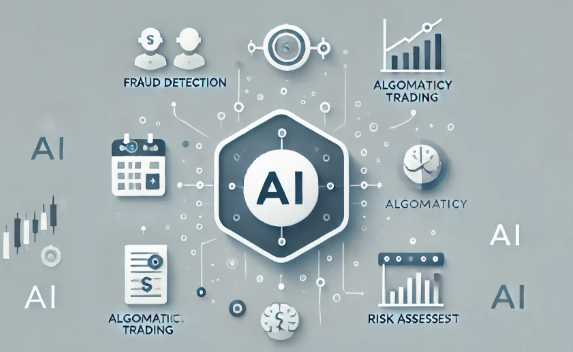The application of Artificial Intelligence (AI) in finance has evolved over several decades, transforming the industry from basic rule-based automation to advanced machine learning systems. The journey reflects the growing sophistication of both financial systems and AI technologies.
1. The Early Beginnings (1950s–1970s)
AI’s conceptual roots go back to the 1950s, but its actual use in finance began in the 1970s with basic rule-based systems.
Banks started using computers for accounting, check processing, and early forms of risk analysis.
Notable Development: Expert systems—simple decision-making programs—were introduced to support loan and investment decisions.
2. The Rise of Automation (1980s–1990s)
During the 1980s, financial institutions began experimenting with algorithmic models and computer-based trading.
AI-powered decision trees and statistical models helped automate credit scoring and underwriting.
Notable Event: The introduction of automated teller machines (ATMs) and early online banking transformed customer service delivery.
3. Emergence of Machine Learning (2000s)
The early 2000s saw the integration of machine learning algorithms into finance, especially in areas like fraud detection, market prediction, and portfolio optimization.
Large datasets enabled training of AI models that could identify complex patterns.
Notable Example: Credit card companies adopted AI for real-time fraud detection by analyzing customer transaction behavior.
4. Fintech Revolution (2010s)
This decade marked the explosion of fintech startups, many of which built their services around AI technologies.
Robo-advisors emerged, offering automated investment advice using AI algorithms.
Major Milestone: AI chatbots and virtual assistants began replacing human customer service agents in banks.
5. AI in Real-Time Decision Making (2020s–Present)
Today, AI plays a crucial role in algorithmic trading, predictive analytics, risk management, and regulatory compliance.
Natural language processing (NLP), deep learning, and sentiment analysis tools are being used to interpret financial news, social media, and earnings calls.
Current Trends: Generative AI is now being explored for report writing, customer communication, and financial content creation.
Conclusion
From simple rule-based systems to sophisticated deep learning models, AI’s role in finance has grown tremendously. It now powers some of the most critical operations in the financial world, and its evolution continues to shape the future of global finance.







Leave feedback about this